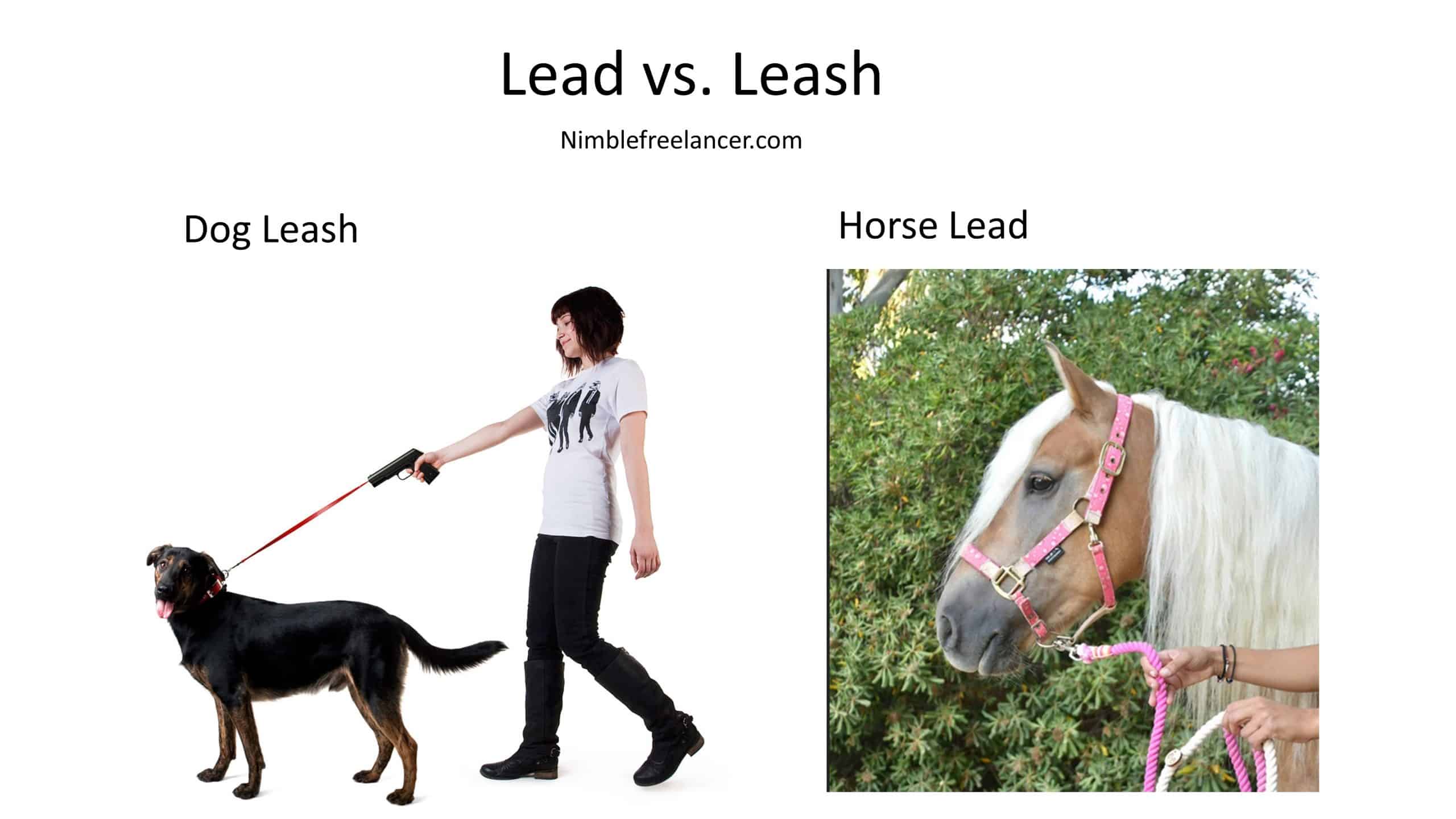This article is created for writers and best language practices.
Dogs are the most loyal friend of many people around the globe. Some people are so obsessed with dogs that they carry their pups everywhere. But watching dogs freely move around the departmental stores, parks, and streets is inconvenient. Ultimately, they are animals, and a certain amount of control is no harm. Non-retractable leads for dogs are a necessity. There is a minor variation between a lead and a leash.
Lead vs. Leash
Lead and Leash have the same meaning: a piece of rope that goes between the animal and human hand. However,” ash” is a verb and noun usually used for dogs and cats, while “read “is generally used for horses and big animals.

When walking a pet, it is essential to provide them with restraints for safety and control. The two most commonly used restraints are leashes and leads. While the two terms are often used interchangeably, there is a difference between them. Understanding these differences can help you select the correct restraint for you and your pet.
A lead is usually made of rope or some other strong material that attaches to an animal’s collar, harness, or halter. This type of restraint is generally best suited for larger animals that may be potentially dangerous or aggressive. It provides a higher level of control and prevents the animal from running away or getting into trouble. Leashes come in varying lengths depending on the size of the animal and the amount of control desired by its handler.
On the other hand, a leash is usually made of lighter material, such as string or delicate chain, and attaches to a collar only. This restraint provides less control than a leash but provides essential guidance when walking your dog. It also allows your pet to explore its surroundings without straining too much against its handler’s grip. Giving them more freedom can make walks more comfortable and enjoyable for both parties.
Let us check what people write more often using the Google search engine:
- “horse lead” “as 1 100 000 searches
- “horse leash” “as 11400 searches
- “dog leash” “as 4 520 000 searches
- “dog lead” s 1 700 000 searches
Leads are lengths of rope or chain that attach to the ananian’seck collar or harness and can be used to lead them when walking. They provide more control over movement direction than other restraints, such as choke collars or head halters. Leashes are similar but longer and generally attach around the ananimal’sidsection. This provides more leverage when controlling large animals such as horses while also giving comfort compared to lead-style restraints.
According to Google search engine statistics, ‘horse lead’ has been searched 1,100,000 times in recent months, with ‘horse leash’ being searched 11400 times during the same period. This shows that horse owners prefer leads over leashes when taking their animals out for a walk. Dog owners similarly favor leads, with ‘d’g lead’ being searched 1,700,000 times compared to only 4,520,000 searches for ‘dog leash.’
‘Keep the following points in mind while choosing the Leash.
- If you prefer clean and non-messy kinds of items, then go for an odor-free and washable Leash.
- Keep the durability factor in mind while buying a leash. If the Leash is weak, the puppy might chip or break it while training. So always hire a strong one; otherwise, you must run to the shop every time the Leash breaks.
- Do you want the Leash all the time or only for the night? Choose a comfortable and lightweight-weighed it’s bit for the entire day.
- The dog chihuahua will bubble happily with a heavy leash, while Saint Bernard will not be pleased. Choose the Leash based on the size and weight of the dog.
Types of Leashes available in the market
- Standard Leash
- Retractable Leash
- Adjustable Leash
- Chain Leash
- Slip Leash
- Short Leash
- Umbilical cord Leash
If you love your dog, choose a Leash wisely; a dog is a best friend. It always has a local company.
- Facebook Ads to Get Followers! - December 27, 2024
- ClickUp vs. Slack - December 20, 2024
- Mastering E-Commerce Analytics: A Blueprint for Success





